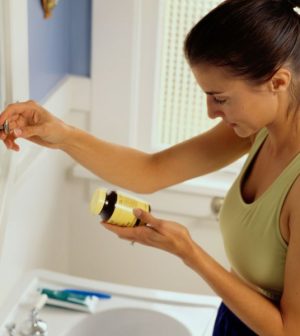- Skip Storing This Everyday Product in the Fridge Door
- Green Tea + B3 Pairing May Boost Brain Health
- Navigating Your Midlife Crisis: Embracing New Possibilities
- City Raccoons Showing Signs of Domestication
- Mapping the Exposome: Science Broadens Focus to Environmental Disease Triggers
- One Week Less on Social Media Linked to Better Mental Health
- Your Brain Changes in Stages as You Age, Study Finds
- Some Suicide Victims Show No Typical Warning Signs, Study Finds
- ByHeart Formula Faces Lawsuits After Babies Sickened With Botulism
- Switch to Vegan Diet Could Cut Your Greenhouse Gas Emissions in Half
Could You Be Short on Vitamin D?

You’d think vitamin deficiencies would be rare in the United States, but many people are running low on vitamin D, and it’s a serious health threat.
Being short on vitamin D not only affects bone density, it’s also been linked to conditions such as heart disease, mental decline, some types of cancer, autoimmune diseases, infectious diseases and type 2 diabetes.
The problem is twofold: Not knowing how much vitamin D you really need, and how to get it. While 600 to 800 International Units (IUs) is the recommended daily amount, it can take more than that to bring you up to a healthy level and maintain it once you have a deficit.
The body can make vitamin D through sun exposure, but there are many variables, from time of day and the season to your location and your skin color. People with pale skin make vitamin D more quickly than those with darker skin. While there is concern about skin cancer risk, under the right conditions, exposing arms and legs (and your torso when possible) for only a few minutes two to three times a week allows the skin to produce enough vitamin D.
Very few foods naturally contain D. Many others are fortified with it, but it’s usually only 100 IUs per serving, making it unlikely that you’ll get even the daily minimum just from diet. An effective strategy may be a combination approach — sensible sun exposure, fortified foods and a supplement.
Talk to your doctor about getting the simple blood test that measures your level of vitamin D and the best way to get to — and stay in — the desired range, if necessary.
More information
Find out more about the importance of vitamin D from the U.S. National Institutes of Health.
Source: HealthDay
Copyright © 2025 HealthDay. All rights reserved.










